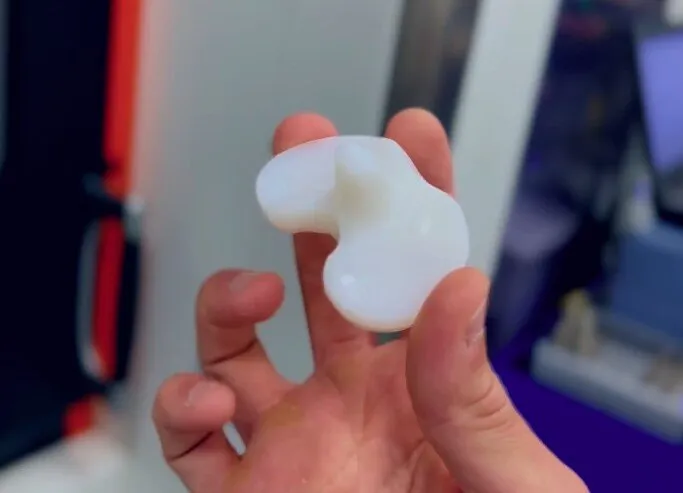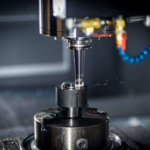The use of orthopedic implants is important in restoring mobility, alleviating pain, and improving the quality of life for people with musculoskeletal conditions and injuries. These implants often replicate the functions of normal bone tissues, easing the patients’ challenges.
Innovative technologies like CNC machining make it easy to manufacture these implants. The technique ensures that the manufactured part maintains all the high precision and accuracy specifications, considering a deviation from the intended design may worsen a patient’s condition.
Orthopedic implants
Therefore, manufacturers must only stick to high-precision manufacturing techniques when fabricating these structures. Moreover, CNC machining suits an extensive range of materials, regardless of design complexities.
This article explores the intricacies of orthopedic implants and the different components and materials used in creating them.
What are Orthopedic Implants?
Orthopedic implants are medical devices designed to support or replace diseased, deformed, or defective bones, joints, cartilage, or tissues of the musculoskeletal system. They play a vital role in restoring the normal movement of the diseased body part while also alleviating pain and discomfort. Therefore, the main purpose of orthopedic implants is to improve the quality of life of patients with orthopedic conditions and injuries.
Depending on the specific needs of orthopedic patients, the function of their implants may vary. While some require joint replacement, others may require fracture fixation, spinal support, or trauma reconstruction. Some specific individuals may require more custom-specific solutions tailored specifically to their needs.
Regardless of the type of orthopedic implant, all follow a similar manufacturing process, often encompassing techniques like CNC machining, 3D printing, and other related technologies. These processes can produce parts with extreme precision and accuracy, regardless of size, shape, and design complexity. Moreover, they suit manufacturing structures with an extensive range of materials, including biocompatible materials like titanium and magnesium.
In addition, CNC machining manufactures parts that adhere strictly to stringent health standards. Consequently, orthopedic implants are safe, productive, and suitable for patients’ needs.
Components of Orthopedic Implants
Orthopedic implants include extensive components tailored to address specific musculoskeletal conditions and injuries. We already mentioned some of them, but this section will discuss each element more thoroughly.
Joint Replacement Components
When you mention orthopedic implants, joint replacement is often the first thing that comes to mind. They include components and prosthetic devices for replacing deformed or diseased joints, like the hips or knees. They are often used in replacement surgeries for individuals experiencing conditions like osteoarthritis or rheumatoid arthritis in the joint area.
Joint replacement components
The implant component helps replicate the natural functions of the biological joints, restoring mobility and relieving pain and discomfort normally experienced. In addition, they are often manufactured with strong materials like titanium because the joints are often exposed to stringent stress and are intended to withstand the demands of the natural joints.
Spinal Implants
Spinal implants are another common component of medical devices used in treating orthopedic conditions. It includes different types of orthopedic implants, like rods, screws, and cages used to stabilize an already deformed spine and correct deformities.
The implants can also prove effective for alleviating the pressure on nerves in the case of spinal injuries or any of such disorders. Therefore, spinal implants can help regain the spinal cord’s normal functions, improving the patient’s overall health and allowing them to move more freely with enhanced stability and reduced pain.
Trauma Recovery Equipment
Trauma recovery equipment also utilizes various types of orthopedic implants, particularly screws, nails, plates, and pins. This orthopedic device helps stabilize fractured bones, joints, or soft tissues from accidents, sports injuries, or other potentially traumatic events.
Besides assisting the healing process, it also proves essential in preventing further damage to the already deformed body part suffering trauma. Therefore, trauma recovery equipment is effective for fracture fixation procedures and trauma surgeries, allowing for adequate fixation and maintaining the proper alignment of fractured bone fragments in the diseased patient.
Customized Implants
Customized implants refer to orthopedic implants tailored to a patient’s unique needs. Some injuries or trauma may affect a person in a unique way that is different from usual, making conventional orthopedic implants ineffective for such treatment. Therefore, such patients require customized implants to help regain the original function of the deformed part.
Advanced technologies like CNC machining make manufacturing such implants pretty straightforward. The orthopedic expert just needs to provide the intended design to the machinist, including all the intricacies. The machinist turns it into a program the computer can understand, and then the device fabricates the intended implant. Personalized implants, too, may incorporate typical orthopedic devices like screws and pins from a biocompatible material, ensuring proper fit and integration with the patient’s body tissues and bones, ensuring optimum performance, comfort, and favorable patient outcomes.
Dental Implants
While some may not refer to dental implants as orthopedic implants, they fall under the classification as they get fused with bone tissues in the jaws. Dental implants replace a missing tooth or the tooth’s root, restoring complete oral function and aesthetics.
Dental implants
Like another orthopedic implants, it is often manufactured using biocompatible material, usually titanium alloy, because of its high mechanical resistance. Dental implants provide a stable foundation for artificial teeth, enchanting the patient’s ability to chew, preserving the jawbone structure and confidence in retaining their beautiful smile, shining a complete set of teeth.
Materials for Orthopedic Implants
Orthopedic implants rely on diverse materials to meet specific patient needs. The material type may vary depending on the bone tissue that needs replacements. However, the main priority of such material is its biocompatibility, as these implants often interact with human tissues. Other factors to consider are the mechanical resistance of the material, as that contributed significantly to the success of the surgical intervention, its durability, and stability.
Metallic Material
Metallic materials, especially titanium alloys, are the go-to materials for creating orthopedic implants. Metals have incredible properties, particularly their strength and durability. Also, they are biocompatible, interacting well with bodily tissues and fluids without causing any adverse effects.
Titanium
As reiterated several times in this article, titanium is one of the most common metals for fabricating orthopedic devices, especially dental implants. It possesses an excellent strength-to-weight ratio, among other features that make it an excellent choice. It offers excellent corrosion resistance and compatibility with bodily tissues, making it suitable for long-term implantation. Titanium alloys are the standard material of choice for various components of orthopedic implants, including joint replacements, spinal implants, and trauma surgeries. The main shortcoming of titanium used for orthopedic implants is its high cost; it’s an expensive material.
Stainless Steel
Stainless steel is another material of choice for orthopedic implants. It also possesses excellent features that make it suited for this purpose. It is durable, corrosion-resistant, biocompatible, and relatively less expensive than titanium. Stainless steel provides incredible strength for load-bearing applications, making it the go-to material for manufacturing various medical equipment, particularly surgical instruments and trauma recovery equipment. They are commonly used to manufacture orthopedics plates, flexible nails, screws, hip screws, etc.
Magnesium
Magnesium is lightweight and biodegradable. Combining these two features makes it a potential choice for creating temporary implants that will gradually degrade as the bone tissue forms and strengthens. Using magnesium will be vital in minimizing the need for implant removal surgeries, as the metal can degrade. Since it’s biocompatible, the body’s system can excrete whatever wastes remain without any health challenges after the degradation. However, the use of magnesium for orthopedic applications is still under stringent study to ensure it meets all the industry standards.
Polymer Materials
Plastic polymers are another material that is now gaining attention for fabricating orthopedic implants. They offer innovative solutions in manufacturing parts for medical use. Like metals, they are biocompatible, safe, and possess other important features that make them suitable for implant manufacturing.
Typical plastic Polymers for this purpose include PEEK, PLA, and PE. Below, we examine each of them.
Polyetheretherketone (PEEK)
PEEK is an industrial-grade plastic with excellent mechanical features. Also, it is biocompatible and radiolucent. It is suitable for manufacturing orthopedic devices, especially surgical implants, due to its ability to mimic the mechanical features of bone and reduce the risk of stress shielding.
Polylactic Acid (PA)
Unlike most plastics, PLA is a biodegradable polymer manufactured from renewable resources like cornstarch or sugarcane. Like other materials used in creating orthopedic implant components, it is biocompatible. However, like magnesium, it gradually degrades, making it another suitable choice for temporary implants that degrades as the bone reforms and strengthens. In addition, it may also suit drug delivery systems for other medical or even orthopedic applications.
Polyethylene (PE)
Polyethylene has been another common material used to create orthopedic implants since the inception of modern arthroplasty. High-density polyethylene (HDPE) and ultra-high molecular weight polyethylene (UHMWPE) are common in joint replacement surgeries and other orthopedic applications. The plastic possesses excellent mechanical features, including wear resistance, durability, low friction, and, of course, biocompatibility. However, its use in implant manufacturing is facing some restrictions because of potential long-term wear and tear and particle generation.
Conclusion
CNC machining is an essential technology for the medical industry. It’s important in manufacturing orthopedic implants, among other applications. The ability to customize components tailored to individual patient needs makes it a valuable tech. Even as it fabricates these implants, it ensures they maintain all necessary quality and safety standards.






